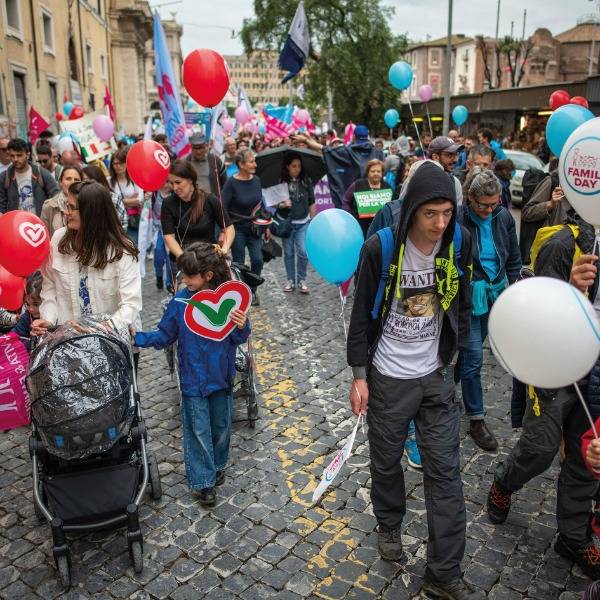Islamic charities have gathered notoriety since 911, some of them accused, much to the embarrassment of those that are entirely respectable, of being vehicles for financing international terrorism. What are these charities, which barely existed thirty years ago? So far poorly documented, they form a meetingpoint for two independent movements that have marked this period: the Islamic resurgence, and the expansion of nongovernmental organisations (NGOs). The rise of Islamic charities affects all countries with substantial Muslim populations. They are also of intellectual interest in that they point up some sharp dilemmas in the world of humanitarianism, whose aspirations to universality seem increasingly threatened by the pressures of politics and especially of religious politics, which thirty years ago seemed to most observers to be on the wane.
A commitment to charitable giving in a general sense has been one of the hallmarks of Islam since its foundation in the seventh century. [i]Zakat[/i], the Islamic tithe, is one of the five 'pillars' of the religion, closely associated in the Koran with prayer, and bearing semantic overtones of productivity and purification. It is much stressed in all modern Islamic writings on social solidarity. Another institution called [i]waqf[/i] (plural [i]awqaf[/i]) was the muslim equivalent of charitable foundations, prominent in almost the whole of the muslim world until the twentieth century. Even today a soupkitchen in East Jerusalem or a drinkingfountain in Oman may turn out to be designated as historic [i]waqf[/i] property and hence protected for public benefit.
Modern humanitarianism may be said to have begun in the 1860s with the founding of the Red Cross movement in Geneva, on firmly nonconfessional principles. However, as early as 1876 the chosen emblem, with its unfortunate connotations of the Crusades, caused friction with Turkish soldiers during the Serbian war to the extent that a local representative of the Red Cross committee was killed and his arm carrying the white 'brassard' mutilated. At the Ottoman government's request, an alternative emblem was allowed: the red crescent. Today, some thirty national societies in the International Red Cross and Red Crescent Movement, all with muslim majority populations, use the red crescent rather than the red cross emblem. Though these Red Crescent societies are supposed to be entirely secular, they tend to show a family resemblance with avowedly Islamic charities, for instance in emphasising the needs of orphans and refugees and in tying their fundraising to the holy month of Ramadan. Their relations with the international movement's Geneva headquarters are as delicate as ever, both on account of the ongoing problem of the two emblems neither of which is acceptable to Israel as an emblem for its national society and because of the decision of the Red Crescents to build up a sectional power base as a counterbalance to what they see as domination of the movement by Western countries.
Among the oldest muslim charities following a recognisably modern pattern is the Circassian Charitable Association in Jordan, founded in 1932 and still active with 3,000 volunteer members. Its policy is to try to educate new leaders for this influential muslim minority. Very different, and closer to traditional muslim piety, is a charity launched in Pakistan in 1951 by a young refugee from India: the Edhi Foundation. It is now a national and international agency specialising in medical services and relief, bearing the stamp of Abdul Sattar Edhi's personal austerity and forthrightness qualities that attract wide support from a public mistrustful of Pakistan's statesponsored institutions.
Unique in another way is the prestigious Aga Khan Foundation, launched in 1967 in Switzerland, an expression of the Ismaili sect's celebrated tradition of solidarity and philanthropy. Though formally nondenominational, and in close liaison with the most sophisticated Western NGOs, it operates mainly in regions such as east Africa and central Asia, where there are Ismaili minorities.
We may also identify a category of Islamic charities that are in effect organs of governments. The largest of these is the International Islamic Relief Organisation (IIRO), based in Jeddah since its founding in 1979 and prominent in all war zones and disaster areas with large numbers of muslim victims. It is one of the charities in Saudi Arabia that benefit from statesponsored [i]zakat[/i]: as a substitute for tax, individuals and businesses are annually invited, but in effect required, to contribute to [i]zakat[/i] funds. IIRO's fundraising videos have emphasised especially the sufferings of muslims in former Communist states, and the need to defend the religion as well as supply material aid. The good name of IIRO has been in question since 911. Though the Saudi government has announced that it is tightening control over the finances of charitable organisations within its jurisdiction, no report and accounts for IIRO have been published since 1976. The position it takes, that its operations are of concern only to its Saudi donors, is completely at odds with the mainstream NGOs, which lay increasing stress on issues of accountability. IIRO is thus weakly placed to defend itself against charges of impropriety.
In conflict zones such as Afghanistan in the 1980s, Bosnia in the 1990s, or Kosovo today, Islamic relief agencies have competed for influence with Western agencies, but also with one another on the basis of opposed interpretations of Islam and opposed national interests. In postSaddam Iraq today, it may be predicted that, when the American military decides to loosen its grip, there will be similar manoeuvring on the charitable front to advance the interests of regional powers such as Saudi Arabia and Iran.
Whereas in Saudi Arabia the Wahhabite version of Islam is integrated with an ultraconservative monarchy, the regime has consistently supported Islamist tendencies elsewhere that are politically subversive. No doubt the motive is to buy off trouble within SaudiArabia itself. The most influential organisation of this type is the Muslim Brotherhood, founded in Egypt in 1928 with the aim of 'islamising' virtually all aspects of public life. Its philosophy combining politics, religion and welfare in a wouldbe seamless whole has helped to form violent movements such as Hamas in the Palestinian territories and the Groupe Islamiste Armé in Algeria; but the more moderate Jordanian Muslim Brothers have matured into providing a kind of 'loyal opposition' to the Hashemite monarchy. The political success of organisations such as Hamas or Hizbullah, the militant Shia group in Lebanon, is partly due to their extensive networks of schools, hospitals and other welfare services, which are able to compensate for deficiencies in government provision. Western and Israeli intelligence has estimated that international financial support for Hamas's social service programmes has recently exceeded $100 million per year, about 10 per cent of which goes to its military wing. It remains to be seen how successful the US government, and now the European Union, will be in prohibiting these monetary flows, deeming the Palestinian resistance to be part and parcel of international terrorism of the AlQaida type.
By contrast, the largest British muslim NGO has been hailed by the Labour politician Clare Short as a 'centre of goodness'. Islamic Relief was founded in 1984 in Birmingham by a group of medical students. It now has six branches and raises funds in the US, France and elsewhere. Its expenditure of about £15 million per year is focused on countries such as Afghanistan, Palestine and Ingushetia, where it helps Chechens displaced by the war. Whereas traditional interpretations of the Koranic rules governing the distribution of [i]zakat[/i] have confined it to Muslim beneficiaries, Islamic Relief has adopted a more liberal interpretation which affirms that [i]zakat[/i] should go those most in need, regardless of religious status. Hence, though its programmes are concentrated on services to muslim populations in crisis, of which there is no shortage, it devotes some of its effort to work that benefits nonmuslims. Thus it is able to satisfy the requirements of British government and European Union funding authorities, which exclude religious discrimination. Islamic Relief enjoys collegial relations with the British overseas aid establishment, while also drawing on the loyalty of Britain's muslim population an analogous strategy to that of Christian Aid, some thirty years its senior.
Britain's other leading Islamic relief agency, Muslim Aid, has retained the more restrictive reading of the zakat rules and also plays more directly to its constituency, for instance in publicly criticising the war in Iraq. Both Islamic Relief and Muslim Aid have been charged by radical Muslim organisations with distracting attention from what they claim is the need to engage in a more militant jihad against the oppression of Palestinians or Chechens.
If Islamic charities may seem to wear politics on their sleeve, we should recall that muslims have long perceived a hidden agenda in the Western aid system. The rise of these charities over the last thirty years may be seen as an exercise in emulation, but drawing on a hallowed vocabulary of religious ethics.

